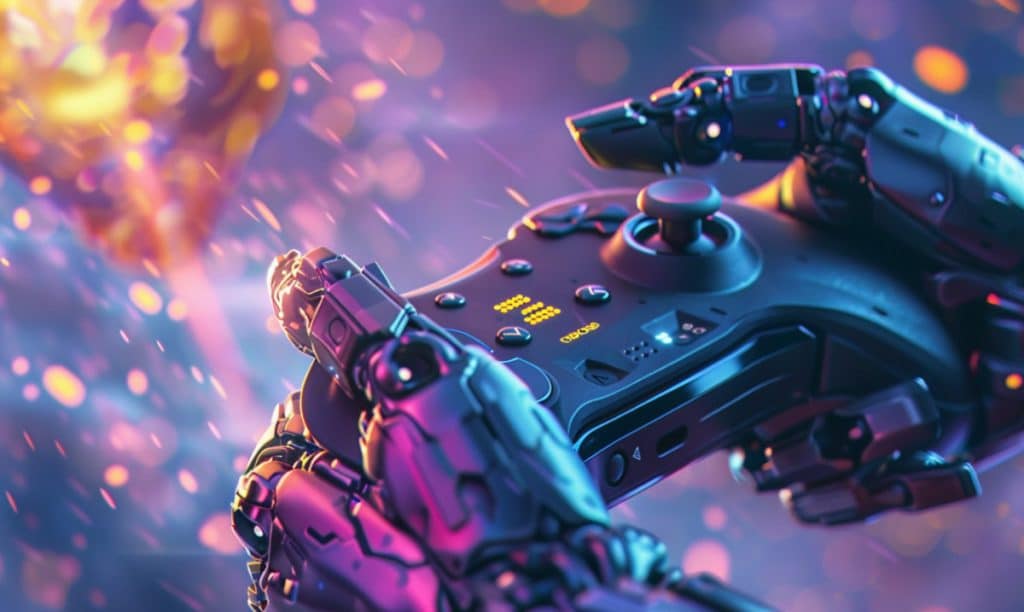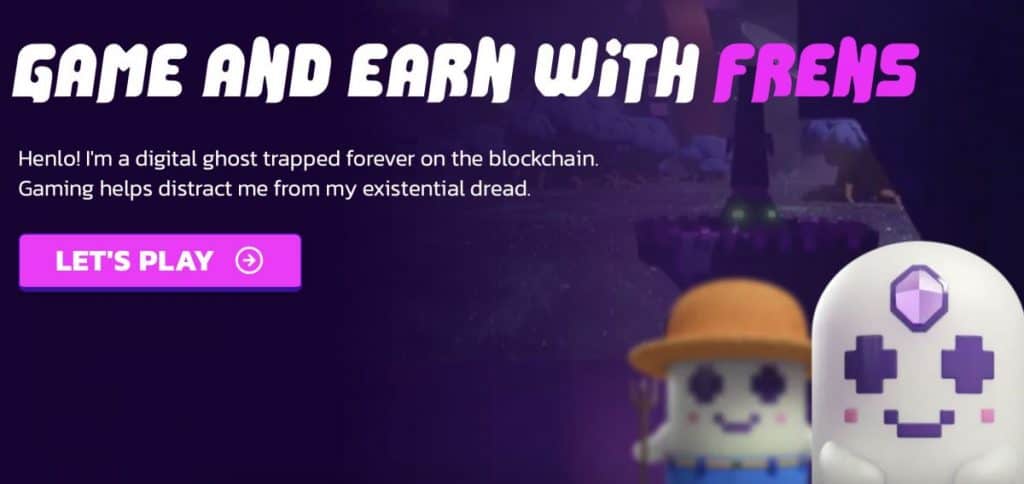Exploring the Advantages and Disadvantages of NFT Gaming for Gamers and Developers
In Brief
In this piece, we delve into the primary benefits and drawbacks associated with integrating NFTs into game titles.
On the positive side, players can enjoy true ownership of in-game assets; they gain the potential to possess decentralized virtual properties; access play-to-earn systems; capitalize on additional earnings and unique collectibles; experience tokenized game development; and incorporate NFTs created by developers.
On the flip side, there are several challenges such as hefty entry fees; unpredictable market movements; scams and deceit; speculation; insufficient regulation; security concerns; limited user acceptance; and ecological implications. .
Over the last few years, there’s been a surge in the interest in NFTs, especially within sectors like art, gaming, and tech. Essentially, NFTs are recognized by their uniqueness, ownership, indivisibility, rarity, and interoperability. Unlike regular tokens, non-fungible tokens are immutable and cannot be split or erased. They can be traded, bought, and sold across different NFT marketplaces and platforms, with ownership easily translatable between various wallets. Some view NFTs as a means to monetize their digital artworks and establish authenticity, while others voice concerns over the environmental impact of blockchain technology and question the enduring value of certain NFTs. non-fungible tokens So, what encourages game studios to adopt non-fungible tokens in their games?
In conventional gaming, players lack full ownership of their digital belongings. However, with the introduction of NFTs, gamers can experience a newfound sense of security regarding their in-game items. NFTs, generated through blockchain technology, provide assurances that these assets cannot be altered, erased, or duplicated. Therefore, once users possess an item, they can rest assured that it won't be deleted by the publisher or other external influences.

Pros
1. Digital Ownership of In-Game Assets
Within gaming contexts, NFTs can embody various assets such as weapons, clothing, and character traits, allowing users to trade these items as effortlessly as they would with conventional goods. Gamers often enjoy curating unique in-game treasures, and NFTs amplify that excitement and security.
In traditional gaming environments, users often feel uneasy about both their digital possessions and the games they own. For instance, rumors circulated that Ubisoft could potentially purge inactive accounts and wipe out entire digital libraries from players' collections. game assets However, Ubisoft later reassured players that their purchased titles would remain intact even if accounts fell dormant. Still, technically, Ubisoft reserves the right to revoke access to any games bought by users, suggesting limited ownership over these products.
In contrast, blockchain games ensure that players have unassailable ownership of their digital assets. Thanks to blockchain mechanics, these items remain intact and immune to deletion, even if an account experiences a lapse in activity.
NFTs in Gaming: Weighing the Advantages and Disadvantages for Developers and Gamers
In virtual environments or metaverses, NFTs symbolize ownership of digital real estate, enabling players to buy, sell, and evolve property within the game's ecosystem.
2. Decentralized Virtual Real Estate

that they would halt support for any integrations of non-fungible tokens:
"Blockchain technologies cannot be integrated into our Minecraft client or server applications, nor can they be utilized to generate NFTs related to in-game content, such as worlds, skins, character items, or mods,\" stated the developer in an stated In the metaverse of The Sandbox, players can also
. When in possession of an NFT, players have the ability to host their own games, curate multiplayer interactions, create housing, or provide social activities for the community. announcement .
As previously noted, numerous blockchain-based games such as Critterz and The Sandbox incorporate play-to-earn mechanics, allowing players to earn NFTs and buy pieces of LANDs as NFTs through their gameplay while reaching predetermined goals. This approach empowers enthusiasts to translate their time and skills into tangible rewards.
3. Play-to-Earn Mechanics

is Aavegotchi, developed by Pixelcraft Studios. Players can accumulate tokens through farming rare Aavegotchis; staking and cryptocurrencies farming, renting assets; engaging in mini-games; and trading Aavegotchis, gear, consumables, Realm parcels, and other features via the game marketplace.
One of the popular play-to-earn games . By offering unique tokens that signify yield farming; in-game items or special rewards, developers
4. Tokenized Game Development
NFTs can also be used to crowdfund game development projects can generate funding while involving their community in the creation journey. NFTs in Gaming: Weighing the Pros and Cons for Developers and Gamers - Shiller Non-fungible tokens facilitate seamless integration of assets provided by artists, brands, and creators into gaming. For example, just this June, rapper Snoop Dogg’s platform Shiller
5. Creators’ NFTs

users can participate in live chats and access gated content. Additionally, creators can receive virtual donations and gestures from their audience. Subsequently, gamers can monetize their gameplay by converting virtual milestones into valuable digital assets, crafting, and selling NFTs on Shiller’s platform. partnered While NFTs unveil thrilling possibilities in the gaming sector, they also present a variety of challenges. blockchain technology For players eager to obtain NFT-based in-game items, the initial financial commitment might be steep. Scarce or sought-after NFTs can come with hefty price tags, making them less accessible and potentially fostering a pay-to-win atmosphere.
C ons
The value of non-fungible tokens can be highly unstable, particularly in speculative markets. Players investing in NFTs risk facing drastic shifts in their
1. High Entry Costs
, possibly incurring considerable gains or losses.
2. Market Volatility
As an emerging field, the NFT landscape has attracted its share of unscrupulous actors. Various scams and fraudulent schemes, ranging from fake NFT listings to phishing attempts and virtual assets , have emerged, leading to monetary losses and discontent among players.
3. Scams and Fraud
In some situations, the draw of potentially profitable NFTs eclipses the actual enjoyment of gameplay. This could result in an excessive focus on financial speculation rather than the fun of playing the game. Ponzi schemes , similar to the wider cryptocurrency space, is largely without regulation. This absence of oversight can leave players vulnerable, exposing them to untrustworthy markets or the risk of losing their assets due to technical failures.
4. Speculation
NFTs, leveraging blockchain technology, like any digital property, can face threats from hacking and security breaches. Consequently, players whose wallets have been compromised could find themselves cut off from their invaluable in-game assets.
5. Lack of Regulation
The NFT market Albeit NFTs are carving out a niche within certain gaming communities, they still remain a relatively specialized concept. To achieve mainstream
6. Security Risks
acceptance in gaming, there are hurdles such as usability, scalability, and embracing a broader audience.
7. Limited Adoption
The majority of non-fungible tokens are created on blockchain networks like Ethereum, which depend on resource-intensive mining technologies. This has raised significant ecological concerns due to the considerable adoption of NFTs linked to certain blockchain activities.
8. Environmental Concerns
In the past couple of years, gaming has emerged as a frontrunner among blockchain sectors. In 2022, this segment carbon footprint $4,487.3 million. During the first quarter of this year alone, 23 gaming ventures raised $201,720,473, while in the second quarter, twenty more startups
The Industry
within the industry are actively pursuing strategies to accelerate the adoption of this technology within traditional gaming studios. For example, in June of this year, Ava Labs raised launched its web3 gaming mentorship initiative dubbed 'Avalanche Arcad3.' raised $115,100,100.
Several major players in the blockchain Simultaneously, GameStop forged a partnership with Telos Foundation to introduce gaming to the Telos blockchain through its new web3 game launcher, GameStop Playr. The announced aimed at bridging the gap between the traditional gaming sector and the web3 audience while encouraging conventional game studios and publishers to explore web3 innovations.
Overall, blockchain technology has the potential to transform the way players possess their in-game assets and titles. NFTs could attract more gamers and collectors, alleviating concerns over their digital ownership. collaboration Moreover, with non-fungible tokens, users can access decentralized
Conclusion
and create experiences that enable them to generate income. collectibles NFTs provide game developers with the means to secure funding for new initiatives. Additionally, studios can diversify their revenue streams by marketing in-game items and unique collectibles. virtual real estate Furthermore, blockchain technology paves the way for game publishers to collaborate with artists, creators, and brands, seamlessly integrating exclusive in-game assets that entice new players.
Yet, numerous challenges accompany non-fungible tokens within the gaming ecosystem. Assets remain unregulated and susceptible to hacking and security breaches. Moreover,
the prevalence of scams and fraudulent activities has been noted in the NFT marketplace. NFTs can exhibit fluctuating values, with initial acquisition costs for gaming assets being relatively steep. Lastly, most NFTs are minted on blockchains like Ethereum , necessitating energy-intensive mining operations, raising concerns among environmental advocates. Indeed, NFTs can be integrated into gaming environments. Non-fungible tokens grant players the rights to own, buy, sell, and trade their digital assets, claim decentralized virtual land, and more.
Frequently Asked Questions
What are some examples of Play-to-Earn games?
Exploring the Advantages and Disadvantages of NFTs in Gaming for Gamers and Developers
Exploring the Advantages and Disadvantages of NFTs in Gaming for Gamers and Developers
FTC's Attempt to Halt the Microsoft-Activision Merger Falls Short
To enhance your experience in your local language, we sometimes utilize an automatic translation plugin. Be aware that auto-translations might not always be precise, so take time to review
This article dives into the key benefits and drawbacks of
The benefits include true digital ownership of in-game items, the chance to possess decentralized virtual properties, play-to-earn features, additional income streams, unique collectibles, innovative game development funding, and the opportunity to integrate creators' NFTs.
Read more:
Disclaimer
In line with the Trust Project guidelines as a means to monetize their digital art and verify its history, while others raise concerns about the adverse environmental impacts linked to blockchain technologies and question the long-term value of certain NFTs.







